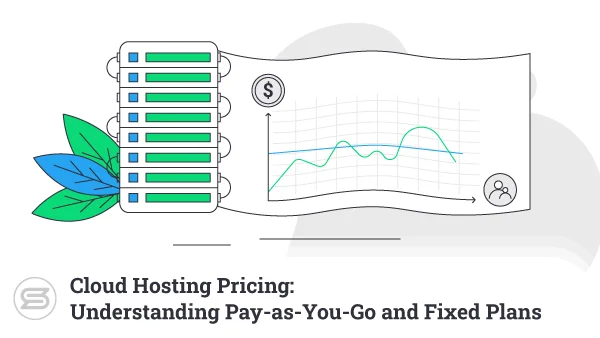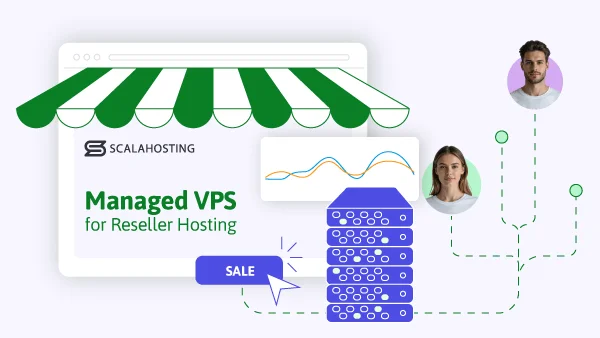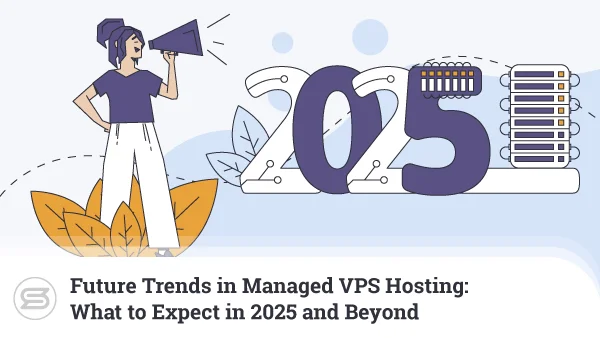Can my Website Survive a Hosting Emergency?
Is it possible to apocalypse-proof your website? Here’s how multi-datacenter clustering offers online stability in a volatile world.
As the internet grows in metaversal proportions, datacenters continue to pop up everywhere to keep up with the rising storage demands.
But that’s certainly not an easy business to maintain.
Staying online is crucial regardless of the online project. Even though datacenter providers are constantly upping their security game, we’re already seeing evidence of how vulnerable our digital assets really are.
Add in some geopolitical tensions that threaten to destabilize our food and energy resources, like the recent Russia-Ukraine conflict and a global pandemic still on the loose, and you may easily start asking questions like “Can my website survive a power blackout?”
One possible solution comes in the form of called Multi-Datacenter Clustering. Today, we are going to learn more about the service and how it can guarantee your uninterrupted uptime.
But first, let’s look at what happens to your website if your servers get nuked.
The impact of an energy crisis on cloud-based servers

In the movie ‘Free Guy,’ one scene shows a tech-billionaire villain destroying his game servers. As he smashes each column with a fire ax, the virtual world begins to disappear.
If your servers share a similar fate – be it an ax-wielding evil villain or a global energy crisis – your virtual property can easily suffer from hours or days of downtime. And we don’t need to tell you that downtime is extremely costly.
Now, keeping in mind all current events, how close are we to a server catastrophe?
Well, it’s not looking good.
And the longer tensions remain high between nuclear-savvy nations, the crazier it gets. We’ve recently seen electricity and oil prices double since the Ukraine invasion, and gas prices are at an all-time high.
At this rate, it won’t take a full-scale war to disrupt the supply chains and energy resources that keep our servers up and running.
For instance, entire data centers can fail due to blackouts and fuel shortages. Even though all of the facilities have a backup energy supply, their fuel reserves will eventually dry up.
We also have to consider the likelihood of cyberattacks on our primary data infrastructures and power grids. Disruptive cyber activity is nothing new. Last year, a cybercriminal attack on the largest US pipeline left the East Coast short on fuel and saw many Americans hoarding gasoline.
So, what would we do without the internet? No doubt, we’d get lost on the roadway easier.
But frustrations with Google Maps would be the least of our concerns. With the right computer hacks, we can see services like how we access hospitals, schools, finances, public transportation, and even our drinking water shut down instantly.
So, while geopolitical tensions are high at the moment, cloud-based servers in data centers are ever-vulnerable to power failure and disruptive cyber activity.
What happens to your website during an emergency?

Many web hosts operate from a single data center, and that’s perfectly fine.
But what happens when disaster strikes? Just recently, the OVHcloud facilities caught fire that took out 500 square meters of servers. This means a lot to the clients – it’s days and even weeks of downtime if the hardware is even salvageable.
Imagine if data centers begin powering down because of fuel shortages or cyber-security breaches.
Websites would drop like flies.
And unless you’re going to run over to the data center with a jerry can of outrageously priced fuel and talk the Kremlin out of messing with our computers – there’s not much you can do about it.
How does web hosting work?

Everything on the internet physically exists somewhere—hard drives in your computer host your files, for example. However, if you need more space or power, you can buy external drives or rent web servers.
There are many classifications of web servers, including virtual private servers (VPS), cloud solutions, dedicated and shared machines, just to name a few. You can find them in server rooms inside gigantic warehouses that we call datacenters.
There are several main types of facilities you can encounter:
- Enterprise data centers are usually best suited for the internal operations of any enterprise. These solutions are common among tech giants like Amazon and Google.
- Cloud data centers refer to any servers that you lease from a third party where you access your resources over the internet.
- Colocation data centers function as a kind of co-working space where the space and resources of a data center are available to rent.
- Managed service data centers directly offer data storage, computing, and management as a third-party service.
Web hosting simply provides the digital environment to store and manage the content of websites and applications. A quality provider also includes maintenance, security, fast speeds, and uninterrupted uptime. But you get much more than the physical space for your files and databases – web hosting consists of all system resources and technical assistance to boost your online presence.
These qualities help high-traffic websites, popular social platforms, open-world multiplayer games, and digital retail giants to handle billions of users confidently.
But without multi-datacenter clustering, you could lose it all if a major energy crisis hits…
What’s Multi-datacenter Clustering?
First, let’s talk about clustering – this term refers to a cloud solution for busy websites that need maximum redundancy, high availability, and the fastest loading speeds.
Redundancy refers to keeping data in two or more places within a database or storage system and ensures an organization can continue operations or services if something happens to its data—for example, data corruption or loss. The concept applies to databases, computer memory, and file storage systems.
High availability clusters are groups of hosts (physical machines) that act as a single system and provide continuous availability. We use high availability clusters for load balancing, backup, and failover switches for mission-critical applications like databases, ecommerce websites, and transaction processing systems.
So, instead of using servers from a single location, multi-datacenter clustering uses resources from a network of data centers. Smart load-balancing picks the most available and nearest server in the cluster network to handle requests.
This reduces traffic strain, resulting in faster cloud performance and fewer connection failures.
Additionally, copies of your virtual machine are kept in different cloud clusters across various datacenters all over the world. This means that if something extreme happens with the facilities of one of your datacenters, there won’t be any service interruptions as other servers will take over.
The result? Faster, highly reliable, apocalypse-proof web hosting!
How does Multi-datacenter Clustering Work?
Let’s start with the smallest cluster solutions at ScalaHosting.
This tier consists of 5 servers, 2 load-balancers, and 3 cluster nodes running all web services in a distributed storage environment.
A minimal enterprise cluster solution consists of the following:
- 2 x web load balancers in three different regions (North America, Europe, Asia)
- 3 x web servers in each of the regions
- 3 x database servers in each of the regions
- 2 x caching servers with Redis/Memcached in each of the regions
- 2 x database load-balancers in each region
Great, but what does it all mean? Let’s put the pieces together.
- Load-balancers determine the best place to send incoming connection requests to optimize the response time and prevent server overloads.
- Cluster nodes are fundamentally physical computer systems with different IP addresses, running one or more application servers. Simply put, we group together multiple servers that perform as one computer.
- Database servers are powerful computers that store and manage data for a network of users and devices. You have copies of your data on multiple database servers in different regions. All servers are interconnected, so they can load the same data from any location.
- Caching servers save web pages and internet content locally by temporarily storing (caching) previously requested data. A cache server speeds up access to data and also reduces bandwidth demand.
- Database load-balancers distribute the workload across multiple database servers. We configure them to act as a failover mechanism, forward database requests, and modify database responses based on business and technical requirements. For example, masking sensitive data or scaling reads and cache queries to improve performance and decrease resource usage.
You can scale your cluster solution to serve more visitors by adding cluster nodes of each type.
Conclusion
This ride we’re on has been pretty bumpy. Sometimes, the best we can do is hold on tight and focus on mitigating loss. But when it comes to online enterprises – multi-datacenter clustering provides some relief from the danger of fuel shortages, power disturbances, and mother nature playing with the reset button.
Even without the pressure of impending doom, multi-datacenter cluster solutions are the new standard in web hosting. Aside from managing copies of your virtual machine in the event of disasters, they reduce bandwidth costs and boost your website performance.
FAQ
What is data redundancy?
Data redundancy is having the same piece of data in two separate places—for example, an exact copy of your website on two different servers or datacenters.
What is a failover?
Failover is a mechanism that seamlessly and automatically switches from a failing system to a reliable backup system. Failover and switchover are essentially the same, except that failovers are automatic and switchovers require human intervention.
What is the difference between failover and redundancy?
Redundancy uses more than one computer or server in case the other computer fails. Failover is the automatic transfer of workload from a failed computer to another computer. Together, failovers and redundant data work to keep websites and applications running despite any technical failures.
An Exclusive Insiders Look Behind The SEO and Web Development Curtain


